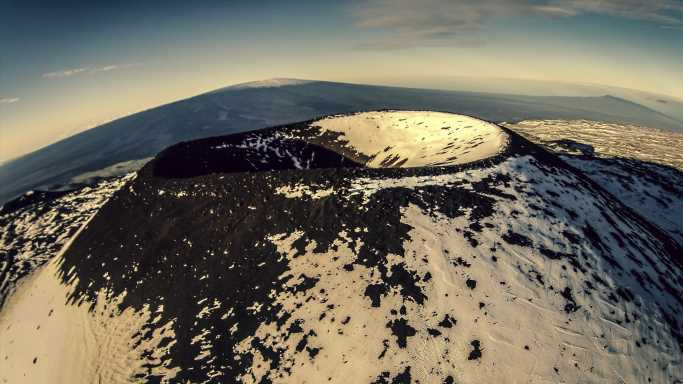Mauna Loa, an active volcano on Hawaii’s Big Island, began erupting in late November for the first time in nearly four decades. There are reports of lava fountains spewing as high as 164 feet into the air. Still, the eruption is not expected to cause any loss of life, nor any lasting impact to infrastructure, besides coating some parts of the island in as much as a quarter inch of ash.
Since the Earth was formed roughly 4.5 billion years ago, it has gone through dozens of major cataclysmic events, including the eruption of supervolcanoes, impacts by comets and asteroids, major tectonic shifts, exposure to cosmic radiation, and more. Most of these took place long before homo sapiens ever walked the Earth.
Some of these events were so violent that they directly ushered in new geologic periods. These were often accompanied by ice ages, mass extinction events, or conversely warming and ecological flourishing. These periods left lasting, major changes to the planet’s species, continental structure, and atmospheric composition.
For those concerned about the looming threat of global climate change, these events, many of which are now millions of years old, bear grim relevance to today.
The major extinction events that occurred since life began on Earth, in the majority of cases, share a few attributes, including major changes in CO2 levels and other gases like methane and sulfur dioxide in the atmosphere and an increase in ocean acidification, which can result from higher CO2 levels.
Since the Industrial Revolution, both carbon concentration in the atmosphere and ocean acidification are increasing at far faster levels than can be explained by cyclical changes. Ocean acidity has increased by 30%, and CO2 levels have roughly doubled compared to preindustrial levels, and the result is the endangerment of tens of thousands of species. These are the animals humans are driving to extinction.
Currently, the planet’s flora and fauna are dying at a much faster rate than is normal in nature. Scientists have warned we could be in the midst of a sixth major extinction event, which unlike previous extinction events is caused by human activity and could worsen if human-related greenhouse gas emissions continue unchecked. These are the 26 climate crisis disasters that will get worse if we do nothing.
To compile a list of the largest geological forces in Earth’s history, 24/7 Wall St. reviewed publications in scientific journals focusing on cataclysmic events in Earth’s history that resulted in sudden, abrupt, and massive environmental impacts. For each event where the date of occurrence can only be estimated, we list the rough number of years it is believed to have occurred before today, and for events where the exact year of the occurrence is known, the year is written out with A.D. notation.
Click here to see 17 cataclysmic events that changed the Earth forever.
Sponsored: Tips for Investing
A financial advisor can help you understand the advantages and disadvantages of investment properties. Finding a qualified financial advisor doesn’t have to be hard. SmartAsset’s free tool matches you with up to three financial advisors who serve your area, and you can interview your advisor matches at no cost to decide which one is right for you. If you’re ready to find an advisor who can help you achieve your financial goals, get started now.
Investing in real estate can diversify your portfolio. But expanding your horizons may add additional costs. If you’re an investor looking to minimize expenses, consider checking out online brokerages. They often offer low investment fees, helping you maximize your profit.
Source: Read Full Article
-
Disney Being “Very Careful” With Star Wars Movie Development, CEO Bob Iger Says; Marvel Brand Not “Inherently Off,” But “Do You Need A Third Or Fourth” Sequel For Every Character?
-
‘Elite’ Actor Manu Rios Signs With WME
-
U.S. Stocks May Move To The Upside Ahead Of Fed Announcement
-
European Economic News Preview: UK GDP Data Due
-
25 Countries With the Most Free Press

